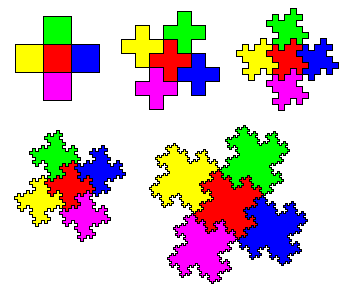In roughly two weeks, my secondary geometry class will have reached the part of the year where we discuss geometric translations: translation, rotation, and reflection. Dilation i am going to use as a segue to similarity so I am just talking within the context of these first three transformations for the remainder of this question. These transformations will be discussed both on and off the coordinate plane. There will be some basic algebra to manipulate coordinates etc. but nothing too intense, some of my students have not taken the second algebra course yet.
I would like to frame these transformations within the context of fractals because 1) they are so visually appealing and intriguing! 2) the serve as a good motivator to investigate these different transformations and 3) ideally the final project for the unit will be to create your own fractal, either by hand or on the computer, using the transformations that we learned, which i think will be really fun for the kids and give me some awesome things to hang on my wall :)
However, I do not know a ton about fractals and am not really sure how to go about tying these two subjects without getting too in depth. I have a book called Indra's Pearls, but it gets into imaginary numbers and some pretty heavy programming which my students have limited exposure to. How can I marry these two topics at a level suitable to a secondary geometry class? Any good resources that give the "quick and dirty" on fractals?
